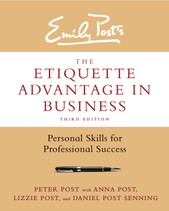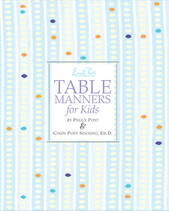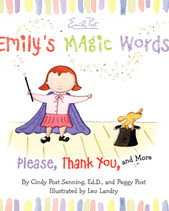
Email Etiquette Dos & Don’ts

Key Considerations:
- Human contact still matters: Even if you're using proper email etiquette, don’t communicate electronically at the expense of personal interaction. There’s a reason people often need to discuss things face-to-face, and there are times when no substitute will do – whether you’re breaking up with your boyfriend or asking your boss for a raise.
- Watch what you say, and how you say it: Whereas the computer brings people together, its impersonal nature can lead to remarks that people wouldn’t think of saying in person. Do whatever it takes to stay courteous, even if that means taping a note to your computer reminding you to be decent and polite.
- Be careful when clicking “Send”: Whatever you say in cyberspace cannot be taken back. You have no control over where your message goes once you’ve hit “Send”; it can be saved and forwarded by any recipient who chooses to do so. Consequently, words have come back to hurt people, destroy friendships, and ruin careers.
How to Address Multiple People In an Email
Whenever addressing one, two, or three people, state each person’s name in the salutation, e.g.:
- Dear, Tom, Mia, and Jim.
- Good afternoon Jose and Camila
When addressing a larger group, you can use a common salutation: Dear Team. In the case of an email reply, use a salutation in the first reply. After the first reply, it is no longer necessary to keep using a salutation. Think of the email chain as being in a conversation: You don’t need to keep saying the person’s name every time you reply.
Email Dos and Don’ts
- Address with care: When sending an email to a long list of recipients, don’t put all the addresses in the “To” and “Cc” lines. Most people don’t want their email addresses displayed for all to see. It’s better to send messages individually or use the blind-copy (Bcc) feature, which allows you to show only one address.
- What’s your subject? Fill in the subject line, even in personal email. The subject line should succinctly identify what you are writing about.
- No yelling, please: Avoid typing your message in capital letters because CAPS ARE THE EQUIVALENT OF SHOUTING. Also, beware of conveying anger and frustration by your choice of words; the recipient will “hear” that anger and frustration in your writing.
- Watch those symbols: Email is singularly lacking in subtlety, and language that the sender may find funny or clever can easily be misunderstood by the recipient. If used, emoticons are better suited for casual messages between friends than for business emails. Likewise, be careful when using online abbreviations or text speak, since they’ll leave some recipients scratching their heads.
- Closings: It’s important to have a strong finish, particularly in business emails. It’s also useful to include information about yourself in case anyone might want to know other ways to reach you. If your email program does not automatically sign your message with your name, address, email address, and phone number, add it yourself. For a chain of reply emails, it is not necessary to include this information with every response.
- Check it over: Be sure messages are clearly organized and grammatically correct. Be sure that you're using proper email etiquette. Write in complete sentences and always check spelling and punctuation – especially in business emails.










